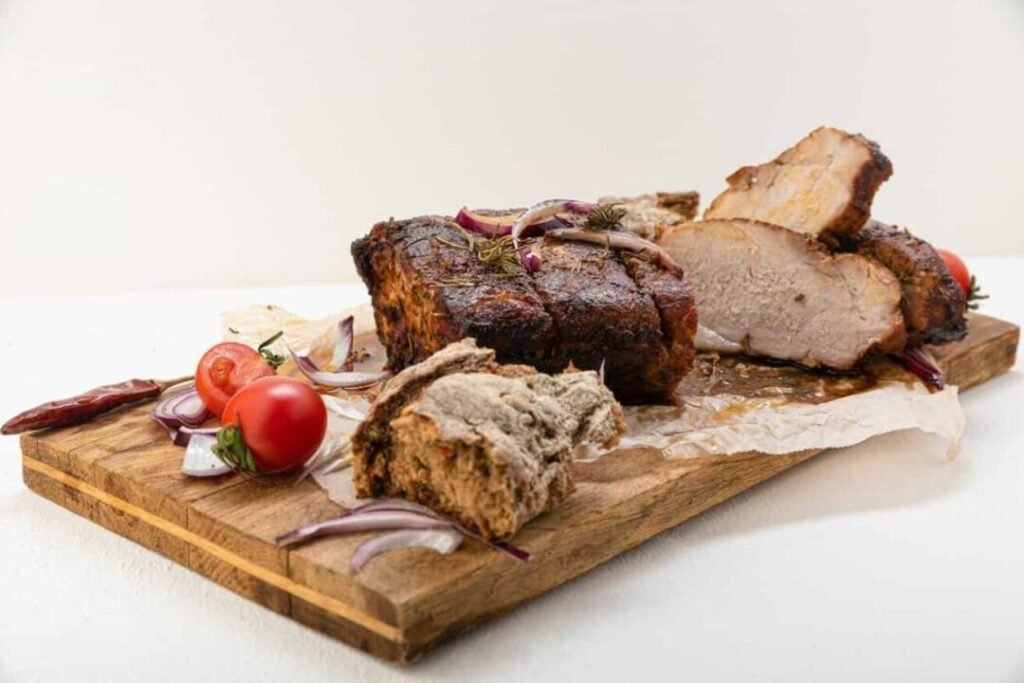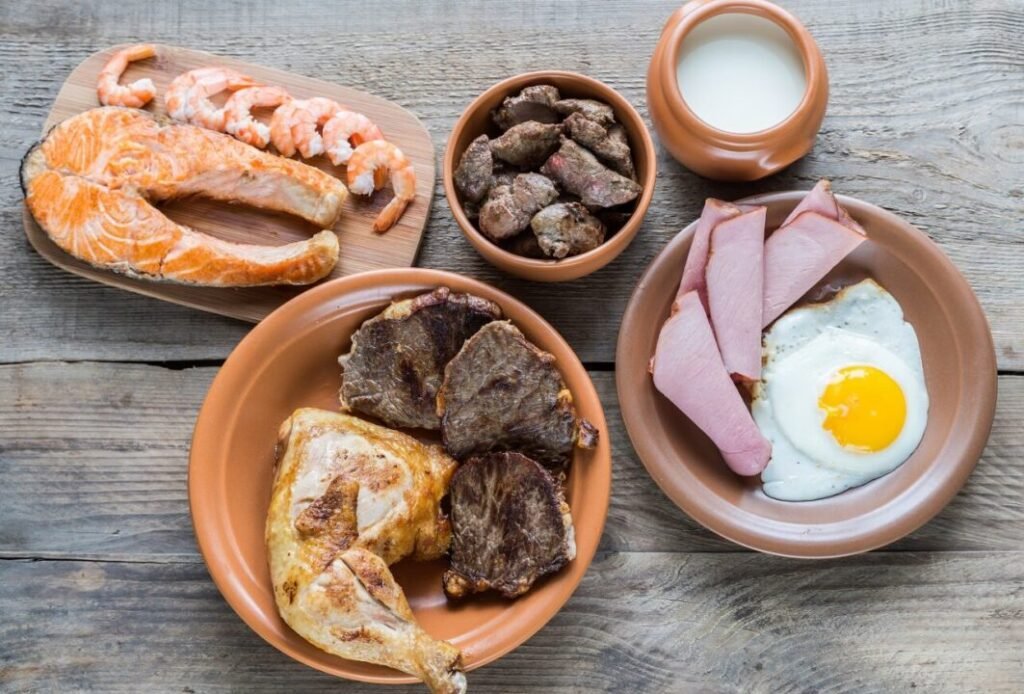Learn Everything About Phases, Sample Menus, And More
The Dukan Diet, devised by Dr. Pierre Dukan, prioritizes high protein, low-carb eating with a structured four-phase approach.
It begins with an “Attack” phase focusing on lean proteins, proceeds to a “Cruise” phase where vegetables are integrated, followed by a “Consolidation” phase incorporating varied foods, and finalizes in a long-term “Stabilization” phase. Sample menus are adjusted according to these phases.
Although the diet promises rapid weight loss, potential downsides include nutrient deficiencies and possible heart health impact.
It’s advisable to consult a health professional for personalized guidance. More insights about the Dukan Diet await as you further explore.
Understanding the Dukan Diet
To fully understand the Dukan Diet, it is important to explore its principles and stages.
The diet is a high-protein, low-carbohydrate, and fat-restricted eating plan, developed by French physician Pierre Dukan. It operates on the principle that consuming protein-rich foods helps to suppress hunger, thereby aiding in weight loss.
The diet encompasses four stages: attack, cruise, consolidation, and stabilization.
Origins of the Dukan Diet
Exploring the origins of the Dukan Diet, it is important to mention that this unique dietary approach was developed by Dr. Pierre Dukan, a French medical doctor and nutritionist, in the 1970s. Dr. Dukan formulated this diet after treating an obese patient who only wished to consume lean protein. The patient’s success led Dr. Dukan to refine and develop the concept into a thorough diet plan.
The Dukan Diet was first introduced to the public in his 2000 book, ‘Je ne sais pas maigrir’ (‘I don’t know how to get slimmer’).
Principles of the Dukan Diet
Having understood the origins of the Dukan Diet, it is now pertinent to examine its underlying principles, which are largely characterized by a high-protein, low-fat, and low-carb approach to weight loss. The diet is founded on the notion that by reducing carbohydrate intake, the body is compelled to burn fat for energy, thereby promoting rapid weight loss.
Protein is emphasized due to its satiating quality, helping to curb hunger and maintain muscle mass.

The Four Phases Explained
The Dukan Diet is strategically divided into four distinct phases, each designed with specific objectives for optimizing weight loss and maintaining a healthy lifestyle. The first is the Attack phase, which kick-starts the diet with a high-protein, low-fat intake.
Next is the Cruise phase, where vegetables are gradually reintroduced while protein remains high.
Phase One: The Attack Phase
Initiating the Dukan Diet with the Attack phase, dieters are required to consume a diet rich in proteins while significantly reducing fat intake, providing an aggressive yet effective commencement to their weight loss journey. This phase, typically lasting for a period of 2-7 days, aims at triggering rapid weight loss by encouraging the body to burn fat in the absence of carbohydrates.
However, it’s crucial to balance this high-protein intake with adequate hydration to ensure optimum kidney function.
Phase Two: The Cruise Phase
Moving into the Cruise Phase, the second stage of the Dukan Diet, incorporates vegetables into the protein-rich regimen established in the Attack phase. This phase aims to gradually achieve the target weight.
Vegetables are introduced to provide necessary fiber, vitamins, and minerals.
Phase Three: The Consolidation Phase
Upon reaching the Consolidation Phase, the third stage of the Dukan Diet, dieters are allowed to gradually reintroduce previously forbidden foods while maintaining the principles of the first two phases. This critical juncture aims to prevent the rebound effect often seen in diet plans – the regaining of lost weight.
The duration of this phase is usually ten days for every pound lost in the earlier stages.
Phase Four: The Stabilization Phase
Entering the final stage of the Dukan Diet, the Stabilization Phase, the emphasis shifts to maintaining the weight loss achieved during the previous phases, thereby preventing any future weight gain. This phase is considered to be the most critical, as it focuses on incorporating sustainable eating habits for long-term weight management.
Unlike the prior stages, there are no specific dietary restrictions.
Sample Dukan Diet Menus
To aid in understanding and following the Dukan Diet, let’s explore a few sample menus that are aligned with each of the diet’s four phases.
Important Considerations:
- Medical Supervision: The Dukan Diet is highly restrictive. Always consult with a doctor or registered dietitian before starting it.
- Phases: The Dukan Diet has four phases: Attack, Cruise, Consolidation, and Stabilization. Menus vary significantly depending on the phase.
- Customization: These are just sample menus. You’ll need to adjust portions and food choices based on your individual needs and the Dukan Diet guidelines.
Sample Menus
Attack Phase (Short-Term, Protein-Only)
- Breakfast: Non-fat Greek yogurt with oat bran, fat-free cottage cheese
- Lunch: Grilled chicken breast, baked fish with lemon
- Dinner: Lean steak, low-fat turkey burgers
- Snacks: Sugar-free gelatin, non-fat cheese sticks
Cruise Phase (Alternates Protein Days with Protein + Vegetable Days)
- Protein Day: Same as Attack Phase
- Protein + Vegetable Day:
- Breakfast: Omelet with spinach and mushrooms
- Lunch: Tuna salad with non-starchy vegetables
- Dinner: Baked salmon with roasted broccoli
- Snacks: Celery sticks with hummus, cucumber slices
Consolidation Phase (Gradual Reintroduction of Carbs and Fats)
- Breakfast: Oatmeal with berries, whole-wheat toast with avocado
- Lunch: Chicken or lentil soup, salad with grilled chicken
- Dinner: Baked fish with brown rice, whole-wheat pasta with lean protein and vegetables
- Snacks: Fruits, nuts, whole-wheat crackers with cheese
Stabilization Phase (Less Restrictive, Focus on Maintenance)
- Similar to Consolidation Phase with more flexibility. Requires ongoing adherence to Dukan principles like daily oat bran and protein-focused days.
Additional Notes
- Water Intake: Dukan Diet emphasizes high water intake throughout all phases.
- Supplements: Multivitamins and other supplements may be recommended.
- Oat Bran: Required in specific amounts across all phases.
- Dukan Diet Resources: Refer to the official Dukan Diet book or website for detailed guidelines and recipes.
Disclaimer: This is not a substitute for personalized medical advice. Always consult a healthcare professional before starting any new diet.

Pros and Cons of the Dukan Diet
Like any dietary regimen, the Dukan Diet presents a unique set of advantages and drawbacks that potential followers should carefully consider before starting on this weight loss journey.
On the plus side, it promotes high-protein consumption, which can lead to satiety and prevent overeating.
On the downside, its restrictive nature may lead to nutritional deficiencies and potential health risks if followed long-term.
In a Nutshell
To wrap up, the Dukan Diet, with its clear structure and rules, offers a potential weight loss solution. However, it may pose challenges in terms of nutritional balance and long-term sustainability.
Therefore, it’s crucial for individuals to carefully consider their personal health needs, preferences, and lifestyle before starting on this diet. Further research and consultation with a healthcare professional are highly recommended for a thorough understanding of this dietary approach.

